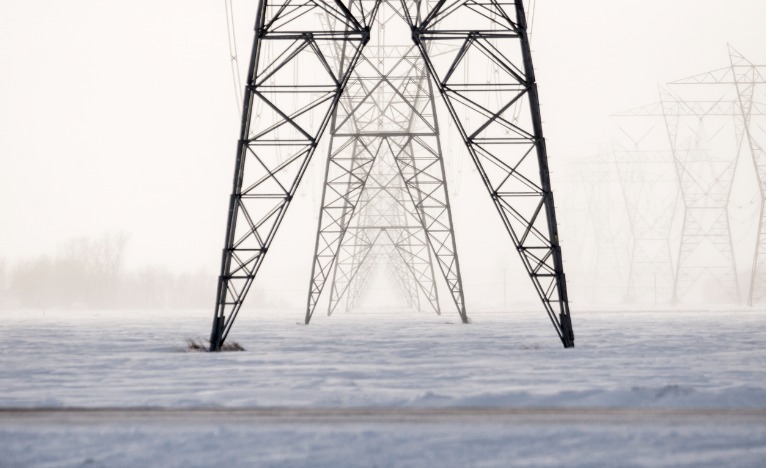How to build a nationwide electricity grid
A major obstacle to Canada reaching its net zero commitments is its balkanized electricity system. Why shouldn't the federal government exercise jurisdiction over interprovincial power lines?

The federal government's "just transition" project is going about as well as expected — or not very well at all, to put it another way.
The phrase was coined to describe Ottawa's promise of legislation to help energy workers displaced by the emergence of a global post-carbon economy find work in new green energy industries. Thanks in part to political efforts in Edmonton to spin federal briefing notes into a secret conspiracy to decommission the oilpatch (abetted by Ottawa's wobbly message management), the phrase "just transition" is tainted in Alberta and Saskatchewan now — maybe permanently.
The "just transition" project will go on, another victim of Ottawa's passive approach to political comms and its opponents' remarkable ability to turn molehills into mountain ranges. "Yes, there has been a failure to engage, although I'm not sure it would have made much of an impact in this case," said Kristen van de Biezenbos, a University of Calgary associate professor specializing in energy law.
"It doesn't really matter that the just transition concept came from the labour movement. The current provincial government [in Alberta] can continue railing against just transition with no real penalty."
Meanwhile, van de Biezenbos and other experts argue the federal government is neglecting an opportunity to engage with the provinces on something that could have a vast impact on Canada's carbon footprint: a nationwide electrical grid.
"It's kind of a universal conclusion that larger grids are better," Paul Denholm, an energy analyst at the National Renewable Energy Lab in Colorado, told Wired magazine in 2019. Grids connect customers to the places where power is generated. Low-or-no-emissions energy sources — like hydro, wind and solar — tend to be located far from population centres. The bigger the grid, the more such energy sources can be incorporated into the mix.
Canada's grids run north-south, not east-west. Surplus power is sold to utilities in the United States — sometimes under conditions and at rates that can inflame political tensions between provinces (looking at you, Churchill Falls).
"It's simply been more profitable to run lines north-south than east-west," said Jean-Thomas Bernard, who studies energy economics at the University of Ottawa. "In that, the grid just followed the pattern of Canada's trade and economic development. B.C.'s been selling power to California for a long time. The economics of supply and demand favour north-south."
And that's a big roadblock standing in the way of Canada's pledge to hit net zero by 2050. Provinces rich in zero-emissions hydro power, like B.C. and Quebec, sit next door to provinces that lack hydro access and must rely on fossil fuel generation to keep the lights on.
On paper, Canada has one of the cleanest electricity systems in the world — 83% non-emitting, according to the International Energy Agency. Hydro is a big part of that. But it's not a "system" in any real sense because cross-border grid links between provinces are few and far between. Without something resembling a national grid, provinces like Alberta will struggle to cut their emissions while neighbouring provinces like B.C. rake in revenue by selling clean hydro to the U.S.
In a 2022 paper, van de Biezenbos wrote that "the addition of significant interprovincial transmission capacity could allow Canada to be the first country in the world to have one 100% renewable electricity generation within a matter of decades." She also argued that the federal government "almost certainly has exclusive jurisdiction" over interprovincial grid connections.
Why haven't market forces encouraged the growth of interprovincial grid links already? Blame the beggar-thy-neighbour nature of politics, said van de Biezenbos. Because provincial grids fall under provincial jurisdiction, provincial utilities would have to pass on the cost of building cross-border links to their current customers, not the new consumers of their power in the neighbouring province.
"Because most Canadian utilities are provincially owned, interprovincial power projects can be politically charged," she wrote in 2022. "… It is not a much of a leap to go from saying Manitoba Hydro wants to sell power to SaskPower to saying Manitoba wants to sell power to Saskatchewan. By contrast, if Manitoba sells power to an investor-owned utility in North Dakota, the same political dynamics are not there."
Ottawa has clear authority over interprovincial lines under the Constitution Act, just as it has authority over interprovincial crude oil pipelines, van de Biezenbos argues. It has never used that authority — a fact that could be explained by the toxic nature of the conflict between Newfoundland and Quebec over the fate of Churchill Falls. No sane federal government wants to get in the middle of that kind of donnybrook if it can avoid it.
But creating a national grid would bring benefits beyond the fight against climate change. Right now, remote off-grid communities — most of them Indigenous — have to rely largely on polluting diesel generators for power. This limits their economic and infrastructure prospects; it's hard to run both a school and a hospital when you don't always have enough juice for both.
A national grid could alleviate poverty in isolated communities and even open them up to new economic opportunities since wind and solar projects tend to be built in remote areas. One 2019 report suggested a $1.7 billion federal investment in interprovincial transmission could unlock another $6.6 billion in private investment to finance transmission, and another $92.5 billion over ten years from private and government sources to build renewable power plants.
Access to cross-border hydro could make it easier for provinces and private investors to introduce zero-emissions power sources like wind and solar. Such power sources tend to be intermittent, meaning they have to be supported by more constant electricity sources.
"In general, electricity has to be generated when it's needed. Battery storage just isn't there yet," said Bernard. "But hydro systems can store water in the spring to run turbines for the rest of the year, which makes them very attractive as a power source to cover slack supply from other sources."
So why hasn't it happened? Provinces jealously guard their jurisdiction from federal intrusion — especially when there's money involved. Van de Biezenbos said any federal effort to build out a national grid would have to start with ironclad assurances that provincial grids stay provincial, that Ottawa's authority would be limited to the interprovincial connections.
And Ottawa would have to put money on the table, she added. "It's going to be tremendously hard to get them to work together," she said. "To begin with, the federal government would have to commit to paying for the infrastructure. Once you have that infrastructure in place, you start attracting interest from more renewable providers.
"The federal government might also have to consider subsidizing rates. It could guarantee a price for a kilowatt hour that would be initially subsidized by government but would pull more competition into the market."
But it all has to start with Ottawa taking charge of its message, van de Biezenbos said.
"The federal government has to keep the narrative focus on the fact that climate change is an international threat, and we have international obligations," she said. "When the provinces get adversarial, the federal government hasn't been very good at holding the line, on sending a clear message that only Ottawa can make this kind of choice because only Ottawa represents all Canadians."


